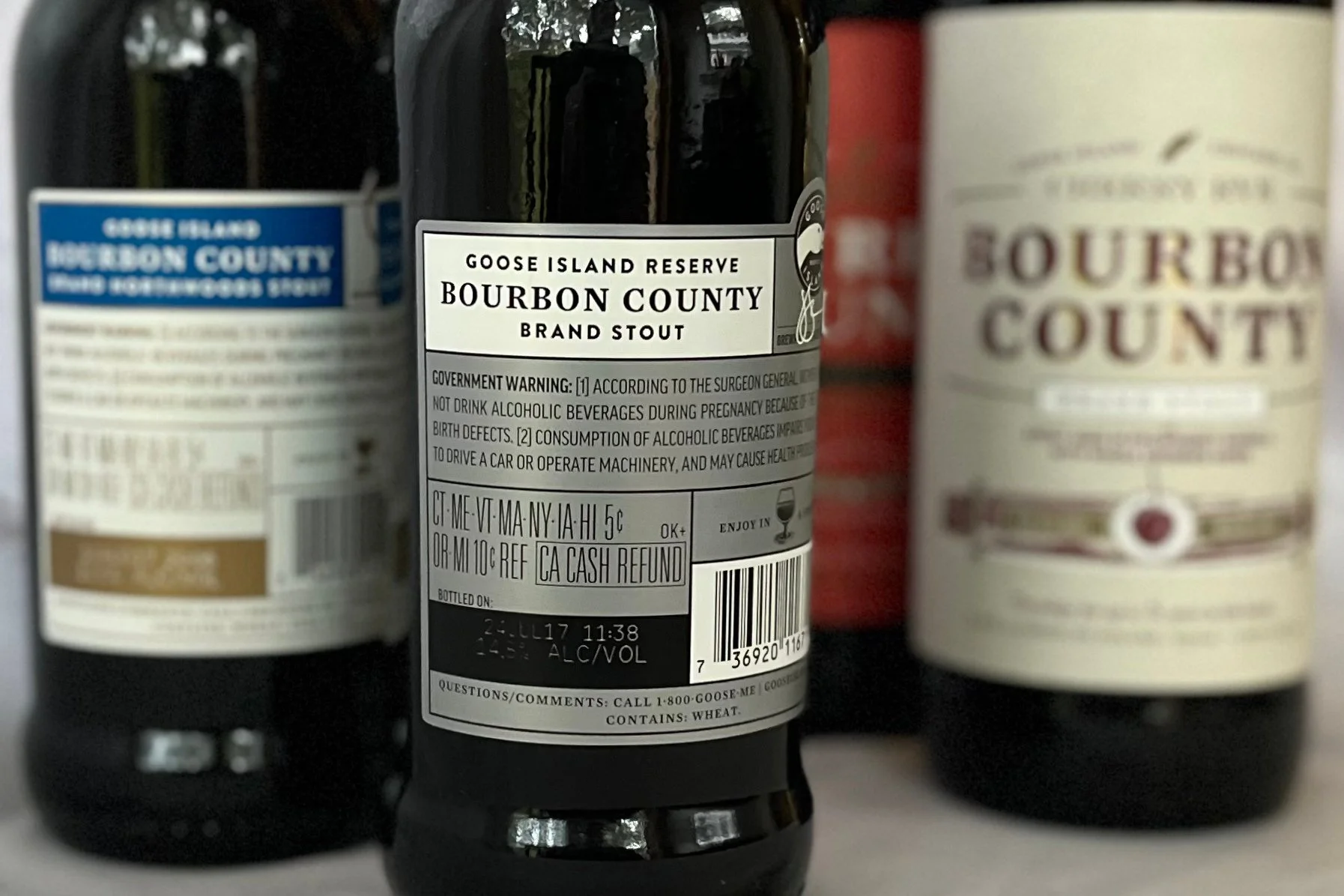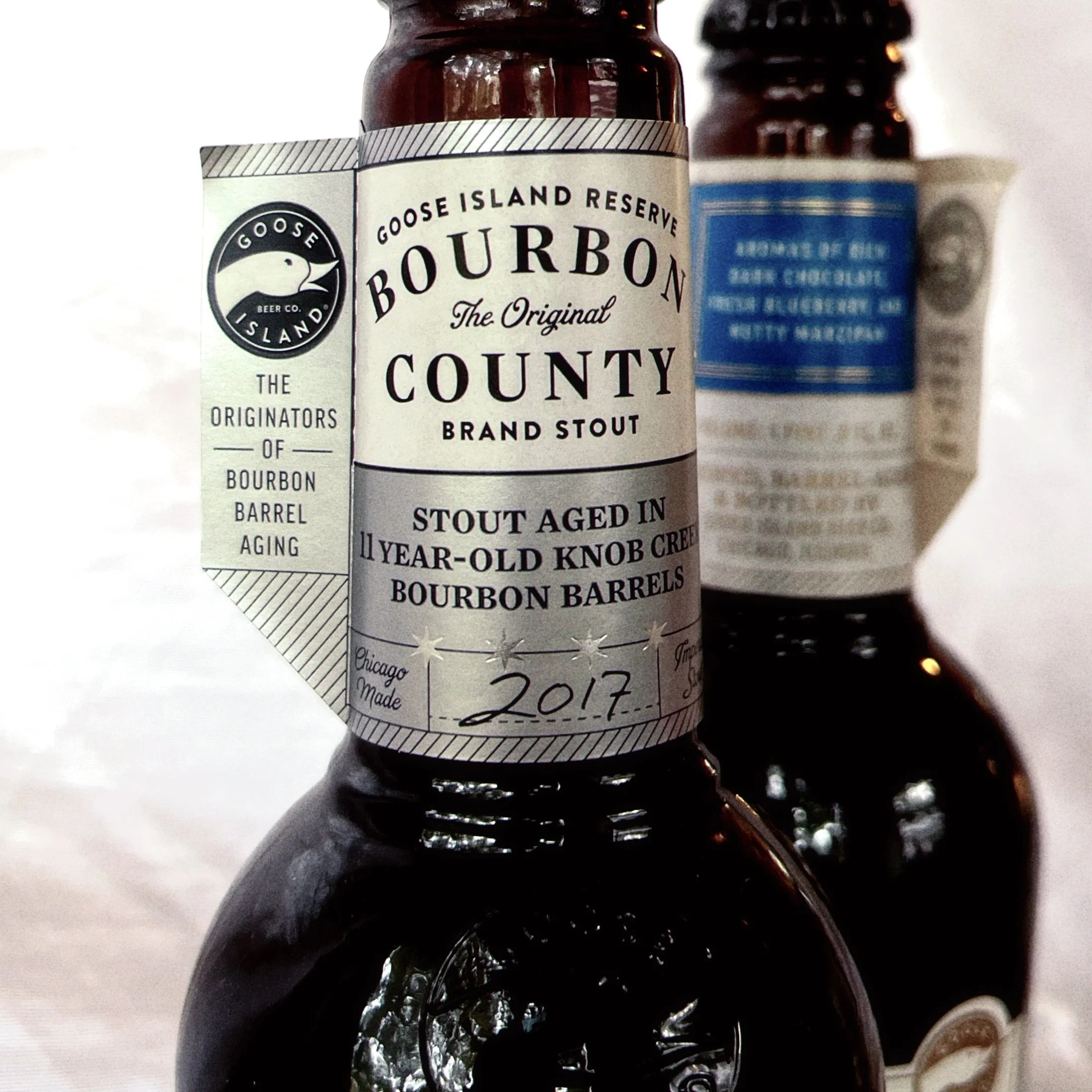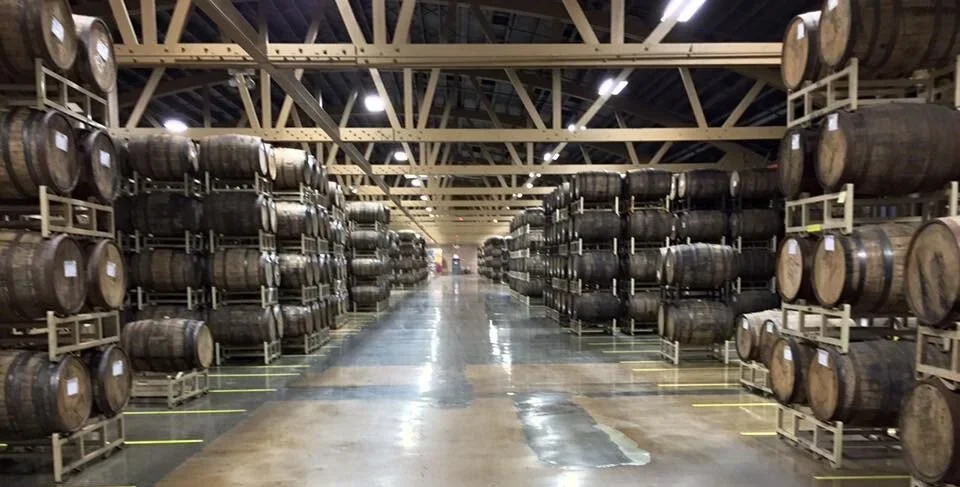The Making of a Classic: Goose Island Bourbon County Stout
Thirty years ago this month, seven-year-old Goose Island brewed an experimental batch of stout aged in bourbon barrels. It was the first commercial beer to bring together the elements that would, within a decade, become an established beer style. In terms of sheer volume, barrel-aged stouts are a tiny niche in American brewing, but it is an important and healthy niche and, in its way, revolutionary. And what I like best about it: it’s a truly American creation. In the thirty years that followed Goose Island’s first batch, their corporate spin and myth-making machine has interceded in an effort to enhance the legend of Bourbon County, somewhat to its detriment. It’s a shame because the legacy of the beer is actually bigger in some ways than Goose Island takes credit for—even while one of its key claims is hogwash.
The Set-Up
The 20th century was not kind to barrel-aged beers. Once, of course, all beer was aged in wood. It’s not a bad material, and large foudres can last for decades. But it’s heavy, and wood can harbor microbes, and even pitch lining fails from time to time. Once metal kegs came along, their advantages meant that almost every brewery in the world had switched by the late 20th century. A few oddball styles like English old ales, lambics, and Flemish roodbruin survived because the microbes added to the flavor, but the breweries making them were small and obscure. by mid-1990s, most breweries wouldn’t have considered using wood, thinking that anything the oak might add would be something the brewery didn’t want.
Breweries would have eventually gotten back to wood-aging, but it’s not a surprise Americans were quicker to the punch. Thanks to a law governing how bourbon whiskey must be made, distilleries could only use their charred, new-oak barrels only once. It ensured that the only color in the spirit came from the wood. For decades, thrifty Scottish distilleries scooped up the used bourbon barrels, but they were still plentiful and cheap. And, it turns out, the empty barrels always retain a little of the whiskey, which means that once breweries tumbled to this cheap resource, they could add a kiss of bourbon flavor to any beer aged in the cast-off casks.
A Fateful Encounter
In 1994, Goose Island was invited to participate in an event showcasing beer, bourbon, and cigars at the LaSalle Grill in South Bend, Indiana. By that time, Greg Hall had become the head brewer at Goose Island—his father founded the brewery—and he led a contingent from the brewery. Representing the bourbon side of things was Booker Noe, grandson of Jim Beam and Master Distiller at the company his ancestors founded. The accounts of what happened at the event vary slightly. In Barrel-Aged Stout and Selling Out, author Josh Noel says Hall already had a plan to discuss sourcing some barrels from Noe.
Nine years ago, I spoke to another attendee, a recently-hired assistant brewer named Seth Gross. It was a very memorable experience for the young brewer. “So we did this very nice beer dinner and we were sitting at the table with Booker Noe,” he started. “I remember him saying things like, ‘You’re friends of mine now, so you can call me Book.’ I thought that was really cool.” According to Gross, the inspiration to use cast-off barrels was a more spontaneous idea that emerged in the moment.
“Then we were joking around about ‘what if we put a beer in there?” But then we were terrified because what if it fortified the beer? At that time you had the ATF, it wasn’t the TTB, and are they going to come and bust us? [Maybe] we shouldn’t do this. Then Greg was asking, ‘what do you do with the used bourbon barrels?’ and ‘Where do they go when they get shipped to other countries?’ and that kind of thing. I think it was about a week, maybe two weeks later, a UPS truck pulls up. So I went out, and there was a Saran-wrapped whiskey barrel with a hand-written note: ‘Thanks for a great dinner,’ from Book.”
Memories vary, and other details are inconsistent. According to Noel, Noe sent four barrels, not one. He also writes that Hall had already brewed an imperial stout as a celebration of the brewery’s 1,000th batch. Well, no matter—the story isn’t much changed no matter whose recollection was right. And what Gross said next is pretty much how Noel describes it in his book:
“Here we are with a brand-new empty whiskey barrel, so we decided to go ahead and brew the Russian imperial stout. We filled it and hid it in the area where we would store grain and things like that, because again, we were like, ‘what if someone finds out? We don’t know if this is legal.’ And it was kind of an experiment just to see what it would taste like, not even knowing if it would be good. We thought the beer might go sour. Who knows?”
That batch did not go sour. (In 2015, when the brewery was making half a warehouse of Bourbon County Stout, it did, leading to a decision to begin pasteurization.) Hall helped bring attention to his experiment by taking it to that year’s Great American Beer Fest. The judges didn’t know what to make of it, but awarded it an honorable mention in the Strong Ale category.
Bourbon-barrel stouts are among the most flavor-intensive beers in the world, and that first batch was memorable. It may not have been perfectly refined, though. In both Noel’s book and this promotional video from the brewery, Hall recalls arriving at the brewery the day after they’d brewed the beer and smelling “burning tires.” The beer was so big that the yeast had gone crazy, driving the temperature of the fermenting wort up to 88 degrees and overwhelming the glycol chiller. A ferment that hot must have led to off-flavors and higher alcohols. Well, no matter. A bit of burning tire wasn’t going to overshadow the larger lessons: strong stouts aged in bourbon barrels were delicious.
Today we understand that a strong stout is an ideal substrate for bourbon. It works for toasty stouts as well as sweeter stouts. The flavors just harmonize beautifully. It’s one of those ideas that seems obvious and inevitable once you hear about it, but for the first batch it would have been anything but. Had Hall put a batch of Honker’s Ale in there—it was their flagship at the time—we might have had to wait years before someone thought of a strong stout. Instead, breweries across the US, first in a trickle and then a flood, would be placing phone calls to Kentucky.
Minor Controversies and Major Legacies
Using the unreliable source of memory, at some point Goose Island decided that original batch was brewed in 1992. It has stubbornly stuck to that date despite lots of evidence that it actually happened in 1995. Seth Gross didn’t even work at Goose Island until late 1993 or 1994, for example, and the Great American Beer Fest documents the beer’s honorable mention in 1995, not 1992. Why would they continue to claim 1992? One reason may have to do with Sam Adams’ 1994 release of Triple Bock, an 18% “extreme beer” aged in whiskey barrels. Perhaps the brewery felt Triple Bock dented Bourbon County’s claim to the throne of first bourbon-barrel beer.
This is currently on the Goose Island webpage.
Noel also credits a group of suburban Chicago homebrewers with a pre-Bourbon County precedent. They brought an experiment into Goose Island in the early ‘90s, and Noel picks up the story: “One of the home brewers had secured a used whiskey barrel but couldn’t make enough stout to fill it himself; he employed his fellow club members to make a similar recipe to blend into the barrel.” The resulting beer was, as Noel described it, “a bit ragged,” but it predated Bourbon County.
You know what—none of that matters much. The single-origin inspiration for beer styles is always the holy grail for a brewery, but in nearly every case it’s more complicated than that. Ideas come from lots of places. The legitimacy of an original has less to do with it being the single font of inspiration, but rather the example that brought everything together and sparked subsequent imitations. And here there’s very little argument about Bourbon County Stout. In this sense it was the original. I had an opportunity to try the 1997 version of Triple Bock, the last vintage Boston Beer made, and it was interesting, but not pleasant. The bottle I tasted was dead flat, and the beer was goopy thick. It was overly intense in the wrong ways, and incredibly sweet. It was a novelty rather than an attempt at a new style, and it was never going to inspire imitators. As for the homebrewers—well, what else is new? Much of what filters up to commercial brewing has precedent in someone’s kitchen. Conversely, a whole lot doesn’t because homebrewers try a bunch of crazy stuff that doesn’t work.
Bourbon County biggest legacy is in reintroduced brewers to the practice of aging on wood. It remains a risky venture, and breweries with barrel programs are used to dumping spoiled beer. But it also creates unique flavors you can’t get any other way. It’s a particularly American method as well, because of those discarded bourbon barrels. We often talk of the “terroir” of a beer, often tendentiously, but aging beer in a Kentucky whiskey is authentically American. Of course, the use of bourbon barrels naturally led to other barrels, and now breweries commonly age beer in wine and other spirit barrels, each adding their own character. it will be a long, long time before breweries abandon oak aging a second time.
I took this in the mid- to late-teens.
Bourbon County Stout went on to become one of the most hyped beers in America, selling out instantly once bottles reached stores in the Midwest. It was such a popular beer it led to tentpole stouts at other breweries—Kate the Great at Portsmouth Brewing, Three Floyds Dark Lord, and the Abyss at Deschutes. The style evolved into sweeter expressions like liquid cakes, with fruit, chocolate, vanilla, and spice additions. Goose Island anticipated this as well, expanding into coffee and vanilla iterations in 2010. Once Anheuser-Busch bought Goose Island outright, it leaned into this cash cow, acquiring a massive warehouse in Chicago to house its barrels. The hype has left craft beer, but the release of a new batch of Bourbon County stouts—which will happen next month—is still major news.
The legacy of that 1995 experiment lives on across the world now, as breweries use barrels from local wineries and distilleries to make concoctions even Greg Hall couldn’t have imagined. These aren’t everyday beers, and they were never meant to be. They’re rare beers made with expensive ingredients (including time) that many of us enjoy on special occasions. When they’re made well, they scratch an itch few other beers can. In fifty or a hundred years, most of the experiments of the craft beer era will be long gone and forgotten. But it’s a safe bet that the marriage of bourbon and beer first brewed in Chicago thirty years ago will still be going strong. And whatever the details, we have Goose Island (with an assist from Jim Beam) to thank for that.





